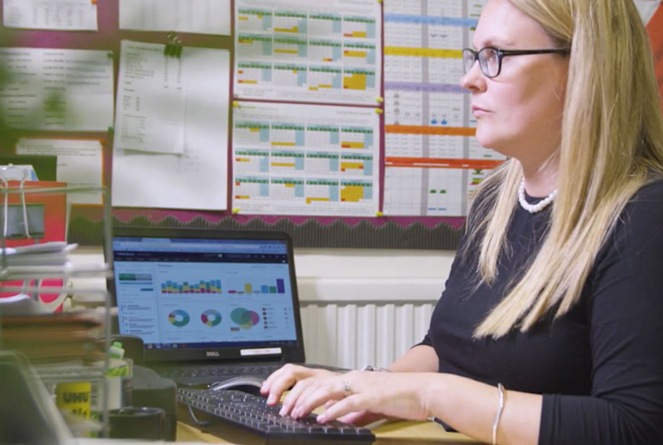State of the Nation
This year, more than ever, the government is focusing on attendance to ensure that it improves and that children missing from education are also given more consideration. In addition to adding guidance on school attendance and a ‘toolkit for schools’ about communicating with families regarding attendance, there has been an update to Keeping Children Safe in Education (KCSIE) 2023.
A recent report stated, ‘More than 12,500 children were missing more school days that they attended for the first term of this academic year, and this is double the number before the pandemic. Pupils eligible for free school meals are twice as likely to have persistent absence, and those with an EHCP are three times as likely.’
Absence for the Autumn/Spring term in 2021/22 was 7.4%. This had previously been 5%.
The next government update will be in October 2023.
Keeping Children Safe in Education
Within KCSIE, it has been made clear that school and college staff need to know ‘the safeguarding response to children who are absent from education, particularly on repeat occasions and/or for prolonged periods’ (para.13). The focus is no longer just on children missing from education but also on children absent from education and how this can be an indication of various safeguarding concerns including neglect, child sexual and child criminal exploitation (county lines).
The Children’s Commissioner
This focus on attendance has also been raised by The Children’s Commissioner, who recently wrote in her blog that she has made it her mission to ensure that every child is in school, ready to learn, every single day.
It was recently stated that one in five children in England regularly miss school (persistently absent). This children’s commissioner put this down to 3 main reasons:
- Children playing truant
- Anxiety
- Children with SEN and mental health issues who find it easier at home
Before the pandemic, this figure was around 1 in 10 children who were persistently absent.
Furthermore, The Children’s Commissioner recently reported that in March 2022, 1,363 (2.7%) looked after children who were missing from school. They also reported that unaccompanied children seeking asylum, male children, older children, children with SEN and children without stable care placements were also more likely to be missing. The Children’s Commissioner is advocating a ‘Children Not in School’ register to strengthen the regulations around unregistered alternative provisions and that Local Authorities should have the skills and be equipped to identify children when they start to miss education.
Mild Illness and Attendance
In their letter to school leaders about mild illness and school attendance, the Department for Education (DfE) and the NHS have recommended that schools share the NHS ‘Is my child too ill for school?’ guidance with parents and carers. They have also acknowledged that pupils may miss more school due to anxiety symptoms than before the pandemic. They have recommended that whilst worry and mild or moderate anxiety are difficult emotions, they can be a normal part of growing up and that attending school can help ease any underlying issues. If a child is suffering from a more heightened level of anxiety, they should be encouraged to access additional support. The letter also directs school leaders to guidance on mental health issues affecting a pupil’s attendance.
The Royal College of General Practitioners has recently approved the following “5 principles to promote school attendance”.
1. Be alert to when it is better to encourage a child to attend school rather than take time off. Consistently promote school attendance, emphasising the importance of attendance for every child’s long-term outcome while continuing to support the child and their family.
2. Reassure and have sensitive conversations with pupils and parents about anxiety, particularly at the start of new school terms, recognising the importance of minimising time missed during the first week of school.
3. Remind ourselves that some schools have mental health support teams, and most have a range of self-help resources and organisations to which we can signpost.
4. Encourage parents and carers to speak to school staff about their child’s worries, enabling them to work together to support their child and improve attendance.
5. Make it a practice policy to try and schedule routine appointments to minimise time taken off school. Although broader in scope than just GP appointments, in 2020/2021, 4.6 million school sessions were interrupted due to medical appointments.
Communicating with Families
Discussing attendance with parents/carers and pupils can be very challenging, but it is a conversation that needs to happen if schools want attendance to improve. In their most recent update about working together to improve school attendance, the government has provided a toolkit for communicating with parents and carers. Below are examples of some guidance they recommend when communicating with families:
- Ensure communications on attendance are timely and regular – talk about emerging attendance patterns early
- Frame absence in lessons missed – percentages can be less clear when describing the impact of absence
- Adopt positive, future-focused messaging encourages parents and carers to consider the wider social benefits of school for the overall well-being of their child
- Balance a firm, factual tone with empathy
- Avoid unevidenced or unrealistic claims
- Be careful about generalising when describing children and young people’s feelings and emotions.
- Consider whether different communication methods may be more suitable. For example, a phone call may be better for a parent/carer who has a disability
Attendance Strategies
Schools and colleges have a wide variety of strategies to promote good attendance, and this will usually consider the context of a school as well. These interventions will often fall into two groups: targeted and whole class/school. Here are some of the more popular strategies used within the education system:
- A tiered communication and meeting system to reflect the child’s attendance level. For example, early identification may result in a meeting with a pastoral leader or class teacher. If there is no improvement, the next meeting may occur with a Leadership Team member, which may finally move onto a governor’s panel
- Looking at attendance on a termly/half-termly basis and cumulative. This aims to show progress and celebrate where a child has improved their attendance
- Mentoring around barriers to attendance and helping build the student’s confidence, resilience and positive relationships
- Children taking ownership of their attendance and logging it in their planners weekly
- Incentives for good attendance, e.g., reward points/house points, are given to students with 100% attendance for a full week
- Working with key staff in school, such as the Sendco, to identify any underlying needs that may be a barrier to attending school.
In Conclusion
Addressing attendance issues is a critical concern in the educational landscape, with increased focus from the government and various stakeholders. The statistics reveal a worrying rise in the number of children missing school, highlighting a pressing need for comprehensive strategies to tackle this issue.
Juniper Education’s Continuing Professional Development (CPD) courses on Safeguarding, particularly concerning attendance, can significantly support teachers and schools in navigating this complex challenge.
Empower your teachers with the essential tools to enhance their safeguarding practices.
View our full list of CPD courses here.
Create a culture of excellence
Go beyond meeting your statutory requirements to maximise pupil attainment. Gain the knowledge and insights you need as a school leader in our latest training programme to create and maintain a culture of excellence in your school – one that keeps children safe, well, and learning.


/Primary%20school%20.jpg?width=2000&name=Primary%20school%20.jpg)








.png?width=940&height=788&name=Lingfield%20College%20Case%20Study%20(5).png)
-1.png?width=1000&height=833&name=National%20Association%20of%20Head%20Teachers%20(3)-1.png)
-3.png?width=1080&height=1080&name=Untitled%20design%20(10)-3.png)






